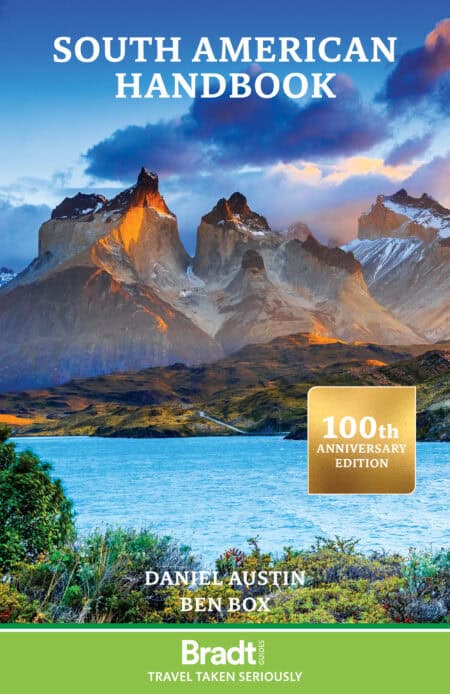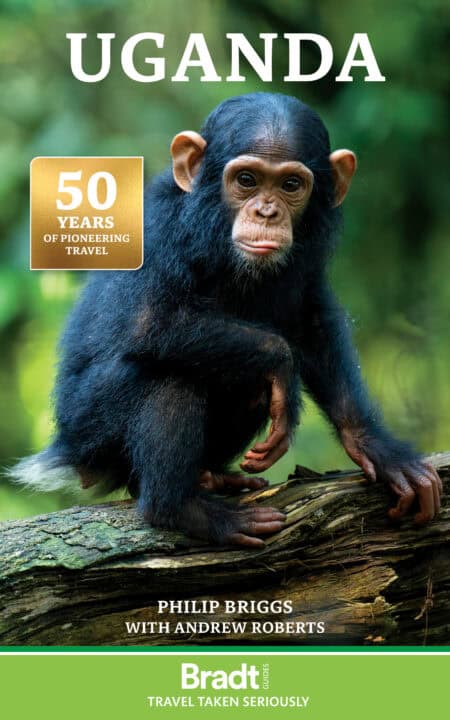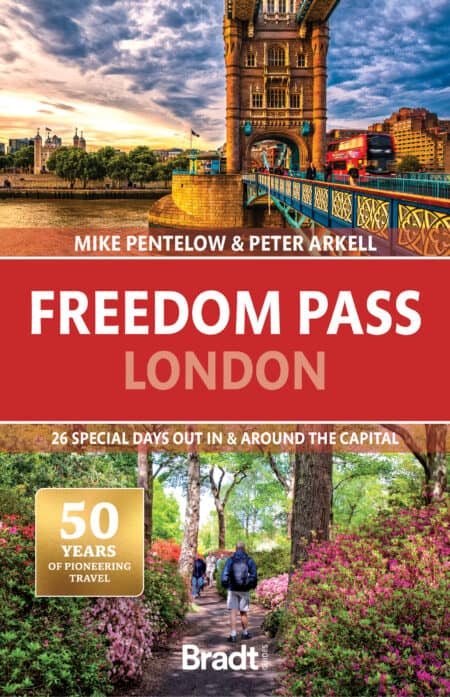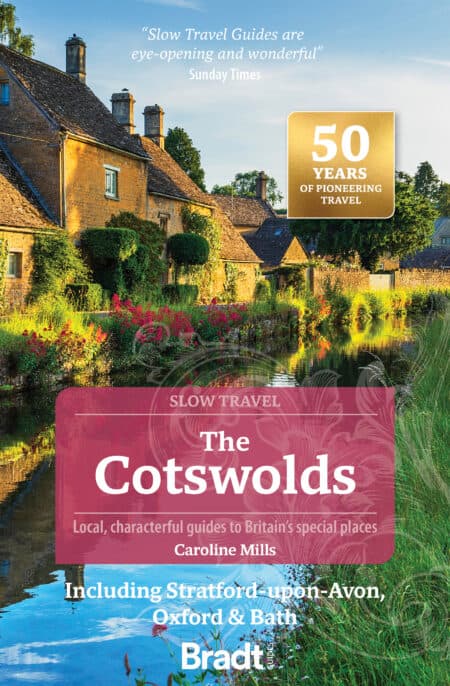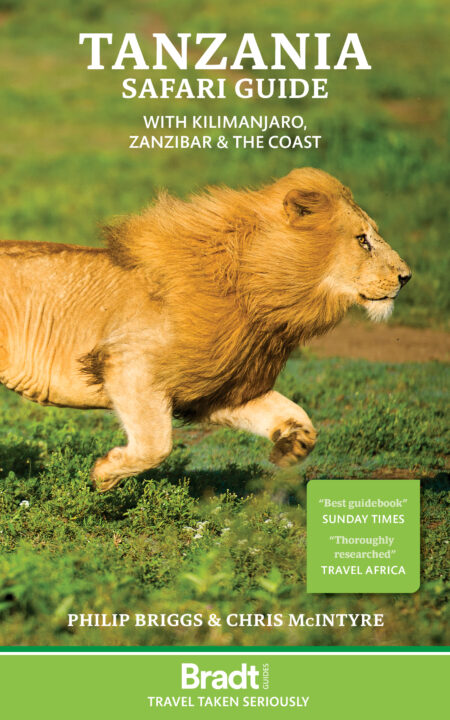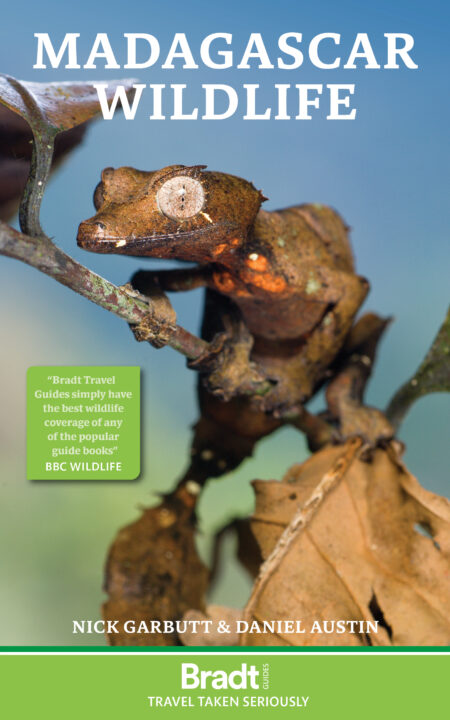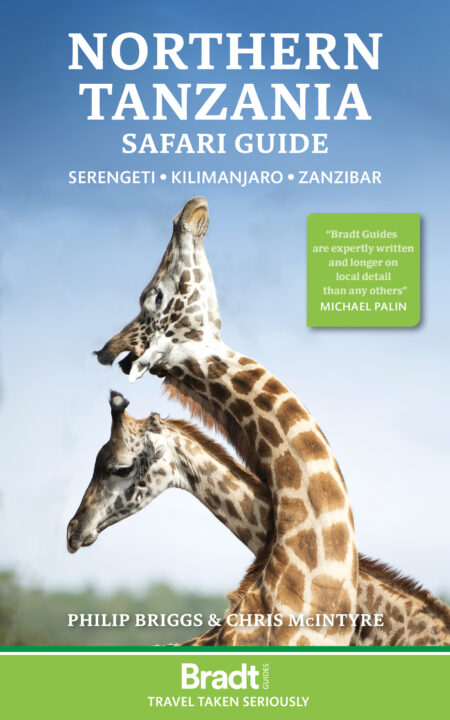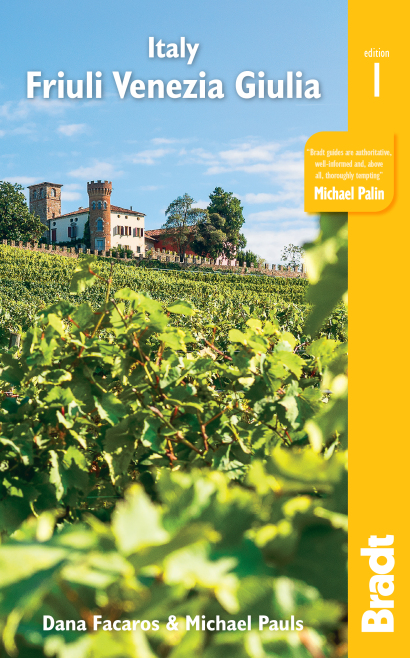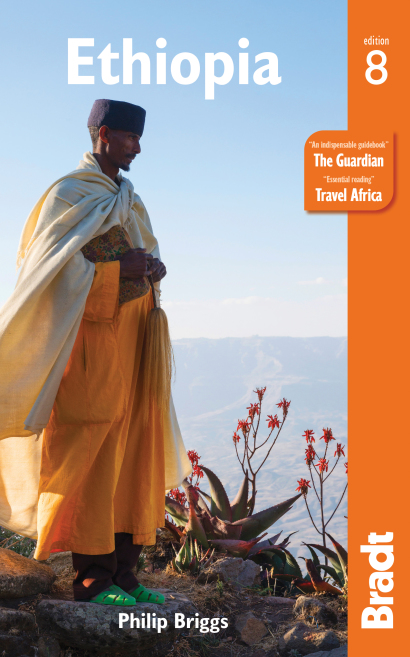It’s time to stop the search. Here are the best places to visit in 2025, according to the experts here at Bradt.
The best places to travel in 2025
It’s that time again – when we at Bradt gather our notebooks, sift through our adventures, and debate over countless cups of coffee to bring you our top destinations for 2025.
Our choices reflect a year of discovery, with a focus on places that promise meaningful encounters, untold stories, and unforgettable moments. From the overlooked to the iconic, we’ve aimed for a list that inspires and surprises in equal measure.
What do you think?
As ever, we recommend checking the latest FCDO Travel Advice before travel.
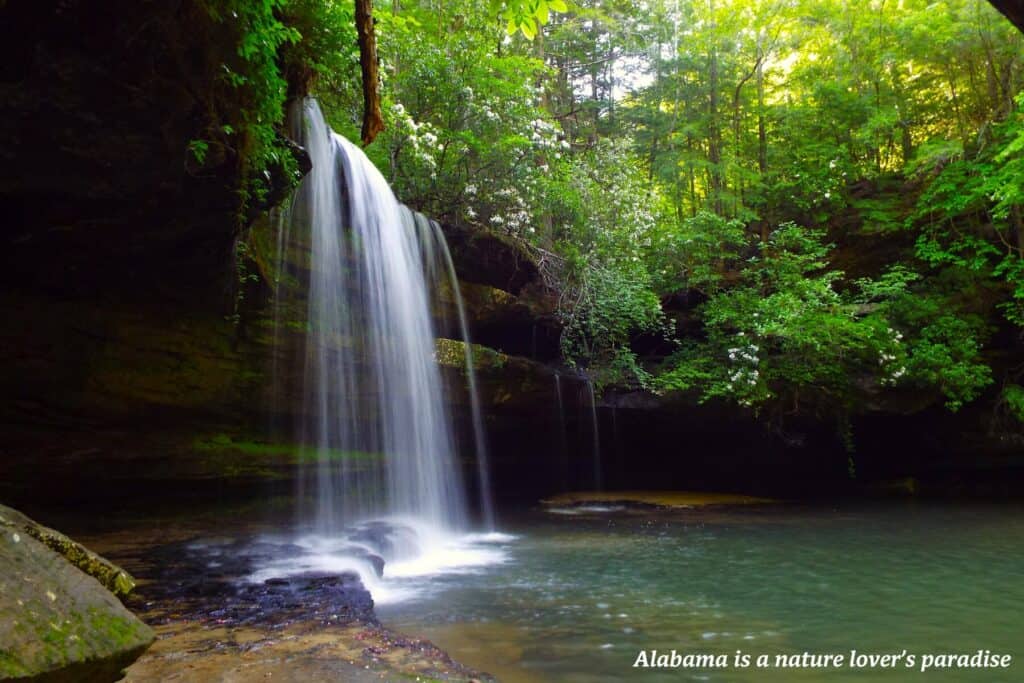
Alabama
With 2025 marking the launch of Alabama’s biggest outdoor initiative yet, there’s never been a better time to explore the state’s stunning landscapes. The Year of Alabama Trails invites you to hike, bike, or paddle on a journey through this part of the Deep South.
From the sun-drenched beaches of the Gulf Coast to the rugged foothills of the Appalachian Mountains, Alabama’s trails offer a gateway to some of the most diverse landscapes in the United States – and the world.
As just one example, the Mobile-Tensaw Delta alone harbours eighteen turtle species, which is more than the Amazon, Nile, Yangtze, Mekong, or any other river system on the planet.
With 1,438 miles of navigable rivers and waterways – the most in the country – paddlers can explore serene, winding paths through areas so rich in biodiversity that they’ve earned the nickname ‘America’s Amazon’.
Hikers and bikers will find trails that weave through an astonishing variety of natural wonders, from lush forests and limestone caves to wetlands teeming with wildlife. Every twist and turn brings a new perspective, whether you’re following a riverside path or trekking through a wildflower-covered mountainside.
But it’s not just the scenery that makes Alabama’s trails special – it’s the sense of tranquility. These trails invite you to exercise your body while recharging your mind, surrounded by the soothing hum of nature.
Whether you seek a peaceful paddle, an invigorating hike, or a scenic bike ride, there’s a trail for you. You can also find out more about Alabama’s natural wonders here.
How to explore Alabama
International travellers can fly from the UK to New Orleans or Nashville and then drive to Alabama to experience the trails across the state.
The best time to visit is in spring (March to May) and fall (September to November), offering mild weather ideal for outdoor adventures.
For hiking, try the Pinhoti Trail, a 350-mile route through forests, or head to Cheaha State Park for breathtaking mountain views. Cyclists can enjoy the Chief Ladiga Trail, a 33-mile scenic path, or explore the rugged Talladega National Forest. For paddling, the Coosa River and Mobile-Tensaw Delta offer excellent waterways.
Pack sturdy boots, water, and snacks for hiking, a helmet and repair kit for cycling, and a lifejacket and waterproof gear for paddling.
Discover more about the Year of Trails and what to do in Alabama on the Alabama Travel website.
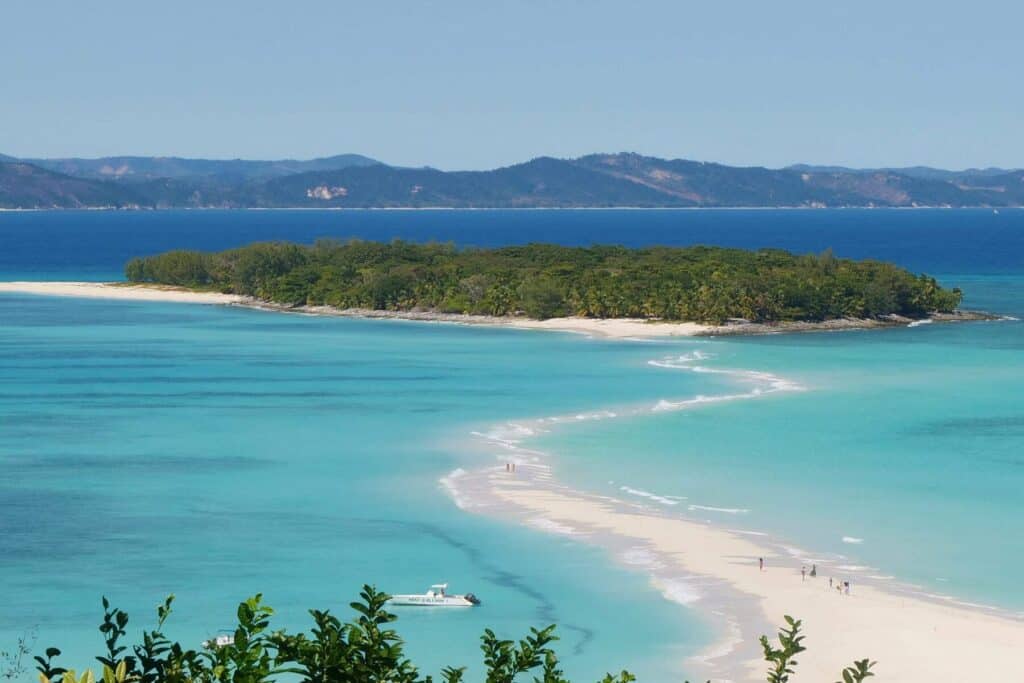
Northern Madagascar
Madagascar has always held a special place in Bradt’s story, thanks to Hilary Bradt’s enduring connection to this extraordinary region and biodiversity hot spot. It’s a destination that invites you to immerse yourself in its wild beauty, from sun-soaked beaches to misty rainforests and dramatic limestone formations.
But it’s a vast country (it’s the world’s fourth largest island) and this year, we celebrate the north.
The iconic Three Bays near Antsiranana offer sweeping coastal views and tranquil sands, while nearby Ramena Beach and the Emerald Sea deliver opportunities for relaxation and snorkeling in crystalline waters. Inland, the trails of Montagne d’Ambre National Park wind through forests alive with waterfalls, orchids, and Madagascar’s famed chameleons.
For those seeking Madagascar’s raw, untamed beauty, the Ankarana Special Reserve is a must-see. Its jagged tsingy formations and hidden caves create a landscape that’s a cross between a cathedral organ and the teeth of Jaws.
Nearby, the Millot Plantation unfolds a feast for the senses, with the heady aroma of vanilla, cocoa, and other tropical delights filling the air.
The Nosy Be archipelago promises an idyllic island escape. Nosy Tanikely is perfect for snorkelling and beachside picnics. On Nosy Komba, you will find not only markets filled with hand-carved treasures and local textiles but also plenty of leaping lemurs.
For relaxation, the unspoiled shores of Nosy Iranja, known as Turtle Island, offer postcard-perfect beauty with white sands stretching into turquoise seas.
Need more convincing? See our list of the best reasons to visit Madagascar.
How to explore Northern Madgascar
To reach northern Madagascar, fly into Antsiranana (Diego Suarez) from Antananarivo, the capital, or consider flying into Nosy Be and then taking a short boat ride to the mainland. Local transport, such as taxis or private transfers, can be arranged to explore the region but it’s a good idea to book with a reputable tour operator that knows the area and best options.
The best time to visit is from April to November, during the dry season, when the weather is cooler and ideal for outdoor activities and exploring the unique landscapes.
Pack lightweight, breathable clothing for the warm climate, and don’t forget sunscreen, insect repellent, and a hat for sun protection. A camera is also essential.
Remote River Expeditions – Madagascar run quality tours throughout Madagascar, including their 13-day Highlights of the North itinerary which takes in Nosy Be, Lokobe National Park, Mont Passot, Nosy Tanikely, Nosy Iranja and Nosy Komba.
You can find out more in our guide to Madagascar.
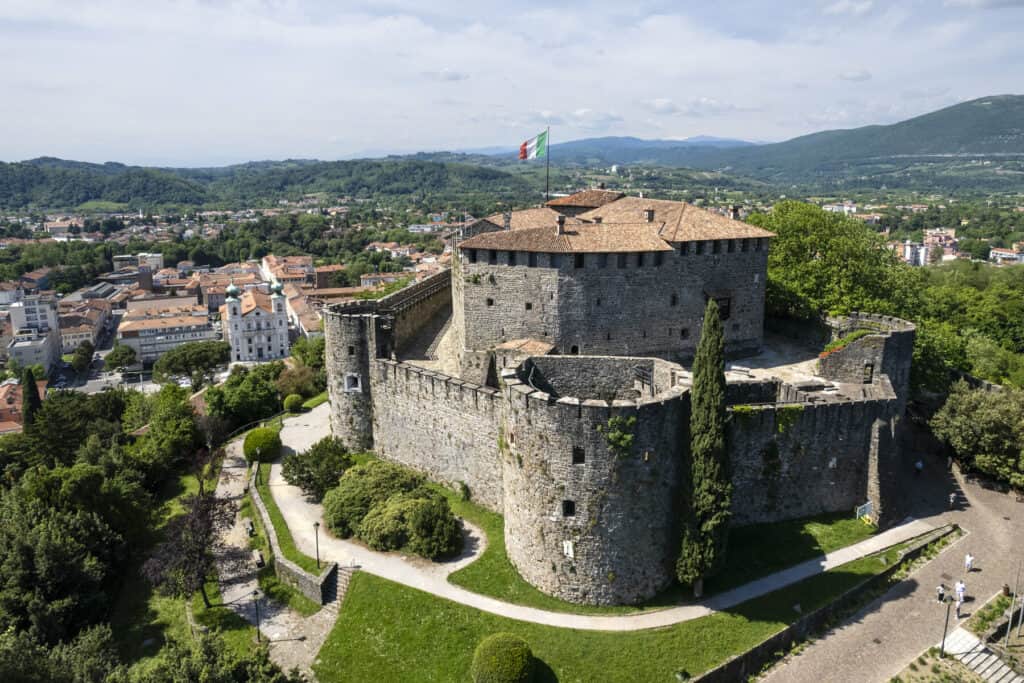
Friuli Venezia Giulia
In 2025, the spotlight shines on Friuli Venezia Giulia as Nova Gorica and Gorizia take centre stage as the joint European Capital of Culture. This shared honour between Italy and Slovenia highlights the unique cross-border heritage of a region that blends cultures, landscapes, and experiences in a way that should serve as an example to others.
Nestled in Italy’s northeastern corner, Friuli Venezia Giulia may not be a household name – yet – but get ready for that to change. Close to Venice yet distinct in character, it also borders Austria and Slovenia, offering a mix of Italian charm and European influences.
From the grand architecture of Trieste to UNESCO treasures like Aquileia, Palmanova, Palù di Livenza and Cividale del Friuli, the region is rich in history and artistry.
The dramatic Dolomites with their jagged lavender peaks add another UNESCO site to the list, this time letting nature take centre stage.
The wide-open mountain areas of Carnia, Tarvisiano, and the Dolomites are perfect for outdoor enthusiasts in every season, offering hiking, skiing, and awe-inspiring alpine vistas.
By the sea, Grado and Lignano Sabbiadoro entice with Blue Flag sandy beaches and serene lagoons.
But this wouldn’t be Italy without talking about the food. Renowned for its top-tier white wines, the region pairs exceptional vintages with a variety of local dishes, from fresh seafood on the coast to hearty mountain fare. Discover more of the region’s culinary delights with our guide to eating in Friuli Venezia Giulia.
In short, Friuli Venezia Giulia invites you to discover a side of Italy you’ve never seen before.
How to explore Friuli Venezia Giulia
To reach Friuli Venezia Giulia, fly into Trieste Airport near Gorizia and Udine, or take a train from Venice or Milan for scenic routes through the region. Local buses or car rentals are the best way to explore the area once you arrive.
The best time to visit is in spring (April to June) and autumn (September to October), when the weather is mild, and the region’s vineyards, mountains, and coastline are at their most picturesque. That said, summer is perfect for cooling off by the sea and winter welcomes snow sports enthusiasts.
Pack comfortable walking shoes for the towns, lightweight clothing for the warm weather, and a jacket for cooler evenings in the mountains. Don’t forget your camera to capture the beautiful landscapes and historical sites.
For all its natural beauty and delicious food and wines, FVG is a place that promises a great journey. Discover everything you need to know about this beautiful region on the FVG Turismo website.
You can find out more in our guide to Friuli Venezia Giulia.
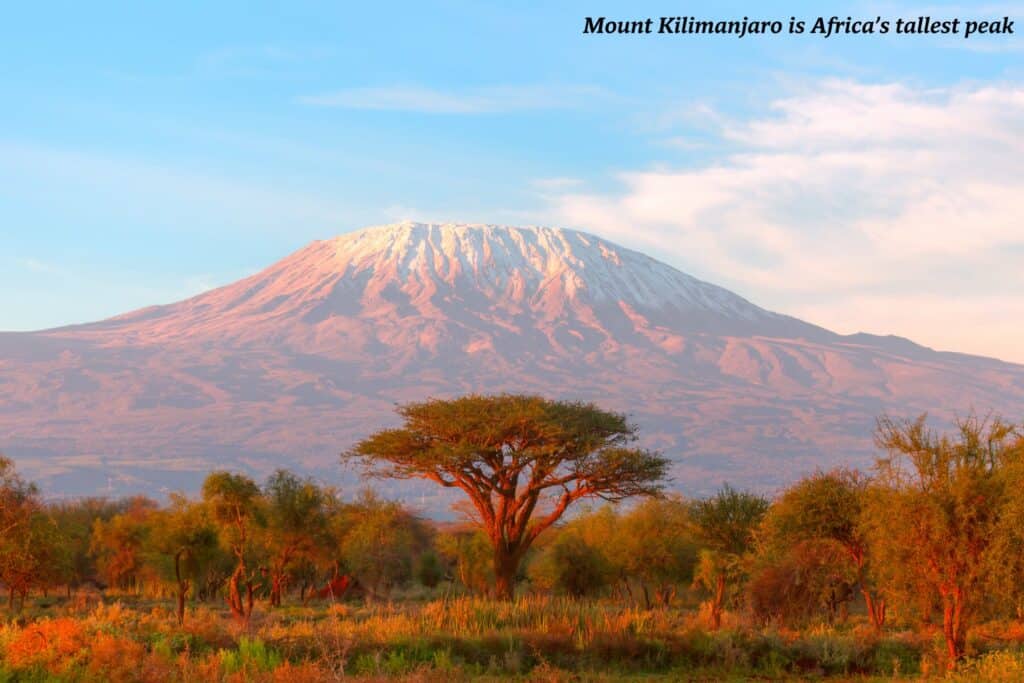
Tanzania
From the vast savannahs of the Serengeti to the snow-capped summit of Mount Kilimanjaro, this East African gem promises an adventure of a lifetime.
And as the world prepares to celebrate Hemingway’s 125th birthday in 2025, it’s time not only to read about the Snows of Kilimanjaro but to visit them as well.
Climbing Africa’s tallest peak is a dream for many. Rising to 5,895 metres, the ‘Roof of Africa’ offers not only panoramic views of the vast plains below but also an unparalleled sense of triumph. With a range of routes tailored to various fitness levels and trekking preferences, the ascent is more accessible than many other famous peaks.
But there is more to Tanzania than Kilimanjaro.
Witness the annual Great Migration in the Serengeti, a spectacle of millions of wildebeest and zebras crossing the plains. Marvel at the UNESCO-listed Ngorongoro Crater, a natural amphitheatre teeming with wildlife, including the Big Five.
The Zanzibar Archipelago offers pristine beaches, busy coral reefs, and a fascinating blend of cultures. Explore Stone Town’s winding alleys, where Swahili, Arab, and European influences intertwine, or simply unwind on the powdery sands of Nungwi and Kendwa.
Meet the Maasai people and learn about their traditions and join a coffee tour in the lush highlands.
Whether on the roof or down at sea level, Tanzania is a destination that stays with you long after you leave.
How to explore Tanzania
To reach Tanzania, fly into Jomo Kenyatta International Airport in Nairobi and take a connecting flight to Kilimanjaro International Airport, or fly directly into Dar es Salaam or Zanzibar.
The best time to visit is during the dry seasons from June to October and December to February, when the weather is ideal for climbing Mount Kilimanjaro and exploring the wildlife-rich national parks like Serengeti and Ngorongoro Crater.
Climbing Mount Kilimanjaro is a highlight for many visitors. The trek typically takes 5-9 days, depending on the route, and offers stunning views of the landscape. If hiking isn’t your thing, you can explore Zanzibar’s beaches, enjoy a safari in the Serengeti, or visit Selous Game Reserve for a more off-the-beaten-path experience.
Pack lightweight, moisture-wicking clothing for the warm climates and warmer layers for the summit of Kilimanjaro. For the trek, sturdy hiking boots, a warm jacket, and a good-quality sleeping bag are essential. Don’t forget sunscreen, a hat, and a camera to capture the incredible views.
Shah Tours offers unforgettable tours in Tanzania, including the popular Lemosho Kilimanjaro Camping Route. This 7-night trek provides full board on the mountain, ensuring a comfortable and immersive adventure. Experience the stunning landscapes of Kilimanjaro while enjoying expert guidance from a responsible company.
You can find out more in our Tanzania Safari guide.

Vietnam
Good morning Vietnam! It’s time to visit this bite-size country in south east Asia, with a brand new Bradt guidebook in your hands.
But where to start?
Hanoi, the country’s centuries-old capital, offers a window into Vietnam’s fascinating past with its ancient temples, French colonial architecture, and rich culinary scene. Further south, the bustling streets of Ho Chi Minh City (Saigon) pulse with energy, while also serving as a gateway to the lush Mekong Delta, where winding rivers and floating markets highlight the region’s distinctive way of life.
The imperial city of Hué, with its grand palaces and temples, takes visitors back to the time of the Nguyen Dynasty. Hoi An, with its well-preserved ancient town, offers a glimpse of Vietnam’s trading history, blends together Chinese, Japanese, and European influences.
Then, there are the natural wonders of Ha Long Bay, with its emerald waters and towering limestone islands, recognised by UNESCO and Bond fans alike.
But 2025 also brings attention to lesser-known places, too, like Phong Nha-Kẻ Bàng National Park. This UNESCO site is home to some of the world’s largest caves, ripe for exploration.
Finally, let’s talk about the food. From high end restaurants to street hawkers, find world-renowned pho and banh mi in the cities, fresh seafood on the coast and heartier dishes in the Central Highlands. After all, no one forgets their first egg coffee in Hanoi.
How to explore Vietnam
Travelling to Vietnam typically involves flying into Hanoi’s Noi Bai International Airport or Ho Chi Minh City’s Tan Son Nhat International Airport, with most flights connecting through major Asian hubs like Bangkok or Singapore. From there, you can use domestic flights, trains, or buses to reach different parts of the country.
The best time to visit generally falls in spring (March to April) and autumn (September to November), when temperatures are moderate and humidity is more manageable. Keep in mind that weather patterns vary by region, so it’s wise to check local forecasts before you go. You can do that on the Vietnam weather page on the Met Office website.
Pack lightweight, breathable clothing for the tropical climate, sturdy walking shoes, and a light rain jacket. Don’t forget insect repellent, sunscreen, and a hat to protect against the elements.
Stay tuned for our brand new guide to Vietnam – coming August 2025.
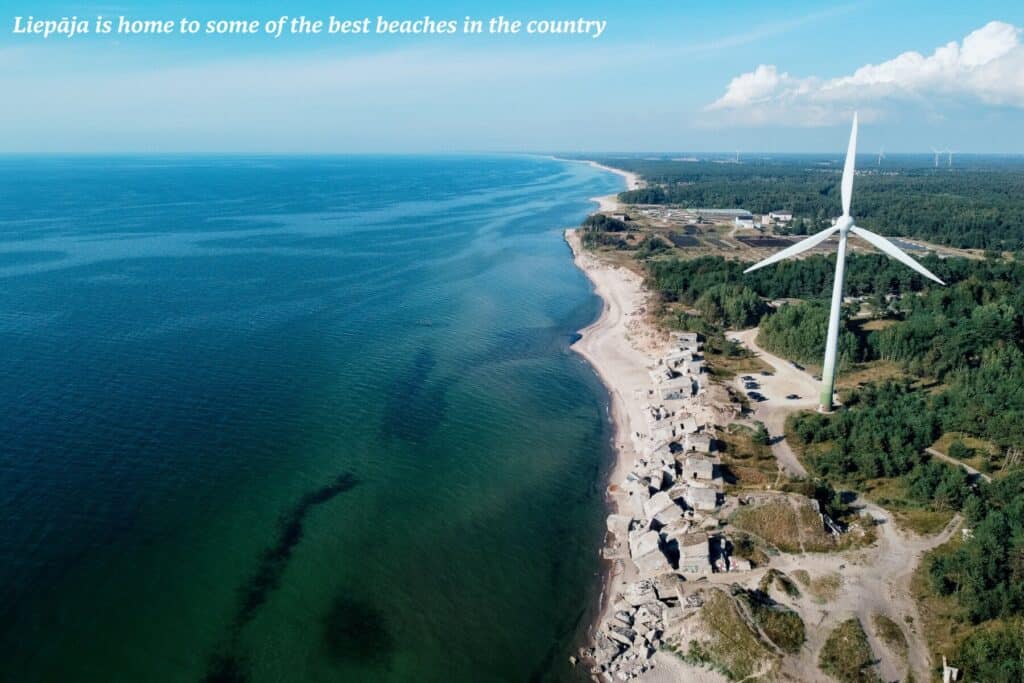
Latvia
The writer Rainer Maria Rilke once said, “The world is full of small, hidden wonders.” Latvia embodies that sentiment, offering a delightful mix of medieval charm, pristine nature, and a lively culture and character that make it one of Europe’s best-kept secrets.
Despite its modest size, it has enough to keep you busy.
Riga, the capital, is a UNESCO World Heritage city known for its stunning Art Nouveau architecture and lively old town, where cobblestone streets wind past medieval buildings and people snuggle into cosy cafes. Beyond Riga, Latvia’s historical towns like Cēsis and Sigulda provide a glimpse into the country’s past, with medieval castles and fortresses offering fascinating insights into centuries of history.
And perhaps you’ve never considered the Baltic for a beach break but let 2025 change your mind. The best beaches in Latvia prize natural beauty and flawless shores. The picturesque town of Jūrmala, famous for its wooden architecture and spa culture, offers a tranquil retreat by the sea and used to be a favourite of the Tsars of Russia.
Inland, put on your hiking boots for the remote and rugged Kuldīga, the UNESCO Biosphere Reserve of the Slītere National Park and the forested Gauja National Park.
How to do it
Travelling to Latvia is easy, with flights from major European cities into Riga International Airport. From Riga, use buses or trains to reach other parts of the country, including popular coastal and countryside destinations.
The best time to visit is during the summer months (June to August), when days are long, temperatures are mild, and outdoor festivals bring extra energy to the streets. If you enjoy fewer crowds and cooler weather, spring and autumn offer a quieter charm.
Pack comfortable walking shoes for cobblestone streets, a light jacket for cooler evenings, and an umbrella or raincoat for the occasional rain shower.
To plan your trip, check out the national tourism board website: the Tourism Department of Investment and Development Agency of Latvia (LIAA) Get ready to explore a land where ancient traditions meet modern wonders, and where every corner tells a story waiting to be discovered.

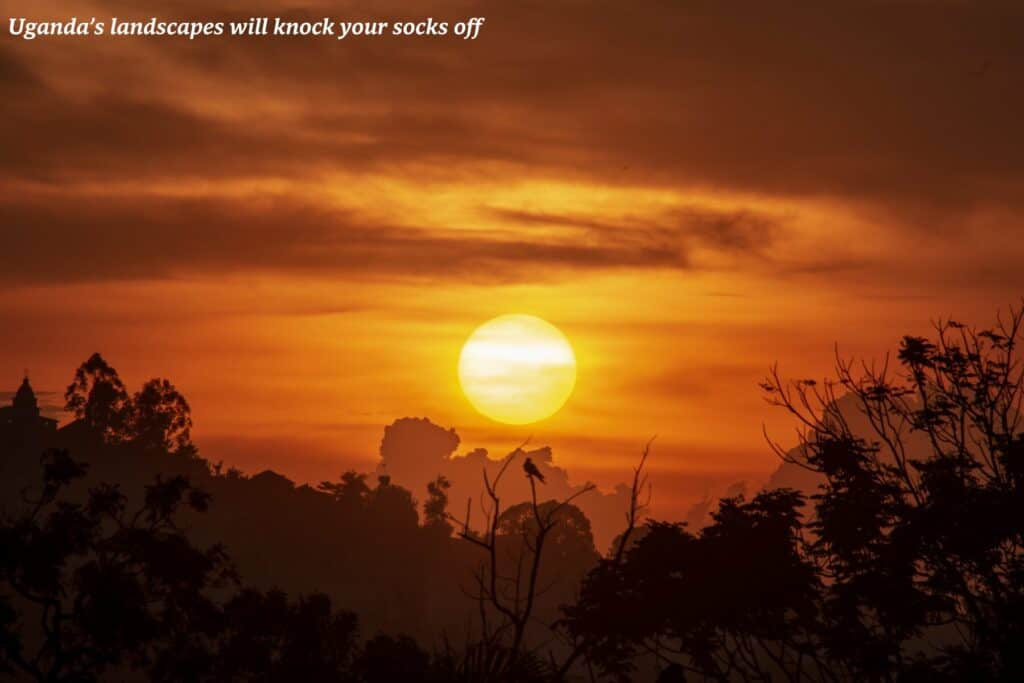
Uganda
Winston Churchill famously dubbed Uganda the “Pearl of Africa,” and the nickname stuck. But there’s more to this East African hub than just pretty panoramas.
Yes, the landscapes will knock your socks off – think misty forests, savannahs that go on forever, and the odd snow-capped peak – but Uganda’s real claim to fame is an in-your-face kind of authenticity.
In Bwindi Impenetrable Forest, a UNESCO World Heritage site draped in a cloak of dense vegetation, you’ll find endangered mountain gorillas foraging, socialising, and living their best lives.
Over in Queen Elizabeth and Murchison Falls National Parks, the lion prides and pachyderm parades offer those memorable safari thrills, while Kibale Forest flaunts one of the continent’s best spots for encountering chimpanzees.
The Nile spills forth from Lake Victoria, inviting adventurers to raft it, float it, or merely marvel at the start of the longest river in the world. For a more hardcore challenge, the Rwenzori Mountains beckon, because who doesn’t love hiking through alpine forests in a place that’s known for tropical climates?
And let’s not forget the people. Uganda is a patchwork of over 50 ethnic groups, each with its own traditions, crafts, and culinary quirks. You’ll hear more languages than you can keep track of, washed down with piping hot coffee and a bite of matoke (steamed plantain.)
So, make 2025 the year you visit the “Pearl of Africa.” Just know that beneath the nickname lies a place that refuses to be typecast. Uganda’s got grit, soul, and more than a dash of attitude – and that’s exactly why it’s worth the trip.
How to explore Uganda
From the UK, fly from London Heathrow or Gatwick to Entebbe International Airport. The flight duration varies but averages around 8 to 10 hours, often with layovers in Europe or the Middle East. From Entebbe, you can arrange local transport or domestic flights to reach national parks and other destinations.
The best time to visit is during the dry seasons, from December to February and June to September, when conditions are ideal for wildlife viewing and gorilla trekking. These periods minimise rainfall and keep trails relatively mud-free.
Pack essentials like lightweight, breathable clothing for the tropical climate, as well as long sleeves for evenings and insect repellent for protection against mosquitoes. Comfortable hiking shoes are crucial for activities like gorilla trekking, and don’t forget a daypack, sunscreen, and a hat to stay prepared for Uganda’s outdoor adventures.
Discover the heart of Africa’s natural beauty on an 8-day luxury safari with Manya Africa Tours. Roam through national parks and game reserves teeming with life, where untouched wilderness reigns supreme. Encounter rare and extraordinary wildlife, from majestic mountain gorillas and playful chimpanzees to the elusive sitatunga antelope and elephants.
You can find out more in our Uganda travel guide.
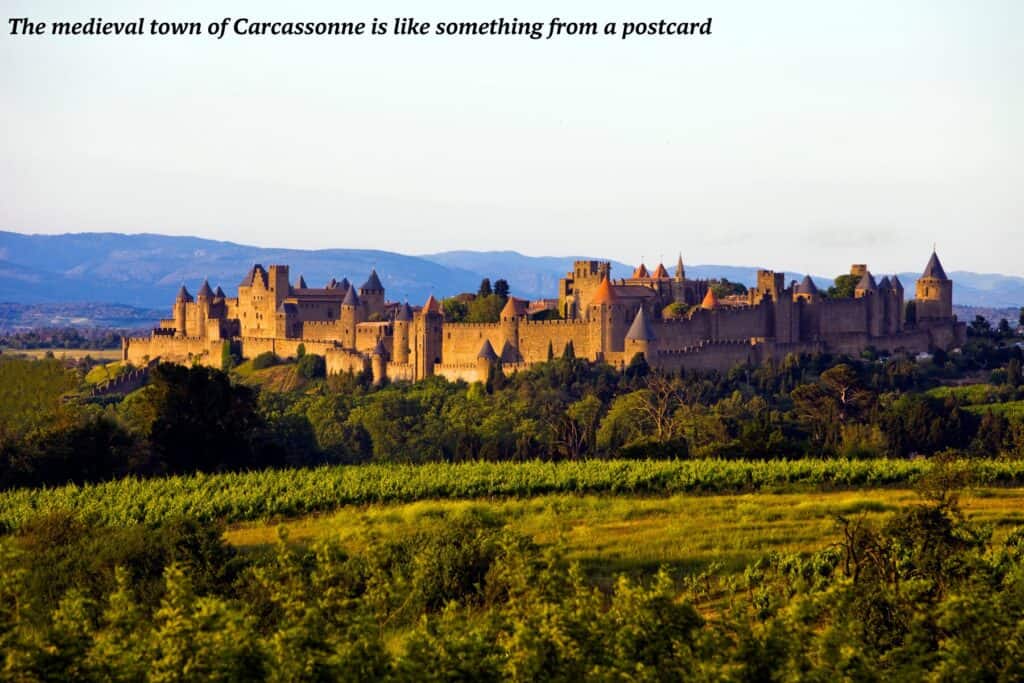
Languedoc
Languedoc, the whisper beside the French Riviera’s roar. A land of castles, vines, and ancient lore. Where sun-drenched plains meet a glittering sea and hiking routes can set you free.
This area of France has long inspired poets but it still doesn’t receive the attention it deserves in travel terms.
Carcassonne, the region’s crown jewel, is a medieval fortress that feels plucked straight from a storybook. Stroll along the ramparts of its double-walled citadel, a UNESCO World Heritage site, and lose yourself in the maze of cobbled streets within.
But Languedoc isn’t just about towns and cities. The wild beauty of the region is just as compelling. The Camargue, a delta of marshes and salt flats, offers a rare glimpse of flamingos, wild horses, and black bulls roaming free. Meanwhile, the Cévennes National Park, with its craggy mountains and deep valleys, provides hiking trails that will leave you breathless in all the right ways.
For wine lovers, Languedoc is a revelation. With its sun-baked vineyards and rustic villages, the region is the largest wine-producing area in France. From the robust reds of Corbières to the crisp whites of Picpoul de Pinet, there’s a tasting trail to suit every palate.
And let’s not forget the coastline. The laid-back Mediterranean beaches near Sète and Gruissan are perfect for seafood feasts and lazy afternoons. For a more offbeat experience, explore the oyster farms of the Thau Lagoon and sample the freshest huîtres paired with a chilled glass of local Muscat.
How to explore Languedoc, France
Travelling to Languedoc is straightforward, with flights from the UK and other European hubs into Montpellier-Méditerranée Airport or Toulouse-Blagnac Airport. Alternatively, you can arrive in Paris and take the TGV south for a scenic journey.
The best time to visit is from late spring to early autumn (May to October), when the weather is warm and ideal for exploring vineyards, historical sites, and coastal towns along the Mediterranean.
Pack comfortable walking shoes, lightweight clothing, and a hat for the sunny days. A light jacket is handy for cooler evenings, and don’t forget a daypack for carrying water, snacks, and your camera.
You can find out more about France and the city of Toulouse in our guide to Dordogne. Plus, stay tuned for our brand new guide to Languedoc-Roussillon – coming October 2025.

Ethiopia
After a painful civil war, parts of Ethiopia are welcoming visitors again. Make sure to check the latest official travel advice before you go as advisories are in place for certain areas.
As the only country in Africa never to have been colonised, Ethiopia has a unique draw.
Often called the cradle of humanity, it’s a place where ancient traditions and natural wonders come together to create an unforgettable travel experience.
Axum, the ancient capital, is home to towering obelisks, legendary tales of the Queen of Sheba, and the Ark of the Covenant’s supposed resting place.
Addis Ababa, the dynamic current capital, blends tradition with modernity and houses the National Museum, where you can meet Lucy, one of humanity’s oldest ancestors.
Breathe in deep, fresh air in the Bale Mountains National Park. Home to the Ethiopian wolf, rare mountain nyala, and sprawling heather moorlands, the park offers pristine hiking trails where the beaten track has never looked so good.
And then there is the Danakil Depression, with its otherworldly salt flats, acid springs, and active volcanoes. For a glimpse of rural life, travel through the Omo Valley to experience the rich traditions of its indigenous communities.
There are human pleasures to enjoy, too. Try injera, a sourdough flatbread, served with a medley of richly spiced stews. Coffee, thought to have originated here, is more than a drink – it’s a cultural ceremony that invites connection and reflection. It will be the most memorable place you ever have a cup of joe.
How to explore Ethiopia
Fly into Addis Ababa Bole International Airport, the main gateway to Ethiopia, with direct connections from Europe, the Middle East, and Africa. Domestic flights, buses, or private cars are the best ways to explore the country’s diverse regions. It’s worth travelling with a responsible tour operator who can navigate the shifting travel advice as the country recovers from its recent civil war.
The best time to visit is from October to March, during the dry season when clear skies make it ideal for exploring Ethiopia’s iconic landmarks and natural beauty.
Pack sturdy walking shoes for uneven terrain, lightweight clothing for warm days, and a jacket for cooler evenings in the highlands. Don’t forget sunscreen, a hat, and a guidebook to fully appreciate Ethiopia’s history and culture.
Established 15 years ago, Ethiopia’s Awaze Tours has the experience and insider knowledge to deliver a fascinating tour. From the ancient capital of Axum and the salt flats of the Danakil Depression to the indigenous tribes of the Omo, no two days are alike as you discover Africa’s only country never colonised.
Find out more in our Ethiopia travel guide.
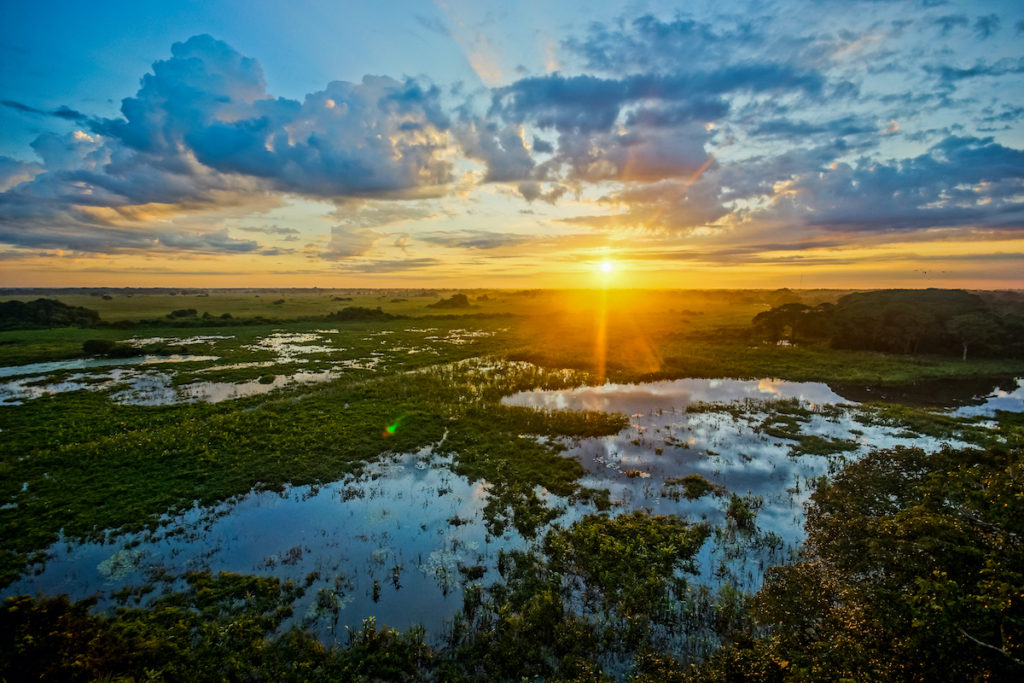
The Pantanal
The Pantanal, where water meets sky in an endless expression of life. The world’s largest tropical wetland sprawls across Brazil, Paraguay, and Bolivia, and it’s a sanctuary for the wild at heart, a place where nature thrives in its raw, untamed glory.
This vast mosaic of marshes, rivers, and savannas is teeming with biodiversity that rivals the Amazon, yet remains refreshingly off the beaten track. Jaguars prowl the riverbanks, their golden eyes gleaming through dense foliage. Capybaras, the world’s largest rodents, bask by the water’s edge, while caimans lurk just beneath the glassy surface.
For birdwatchers, the Pantanal is a paradise – over 600 species fill the skies with colour and sound, from the dazzling blue of the hyacinth macaw to the dignified jabiru stork, with its bright red throat pouch.
Travel here is both tranquil and thrilling. Glide through winding waterways in a canoe or boat, your paddle parting the stillness, as giant river otters play and pink river dolphins breach the surface. As twilight deepens, the mirrored waters turn gold, then crimson – a fiery farewell that reflects the sky’s silent drama.
The fazendas (ranches) provide a window into the region’s cowboy culture. Here, pantaneiros ride the floodplains with time-honed skill, and evenings end with churrascos (barbecues) under a sky pricked with stars.
In 2025, explore it all with the Bradt guide to the Pantanal in hand. This indispensable companion unlocks secret trails, wildlife-watching tips, and the stories that bring this ecosystem to life.
How to explore the Pantanal
Fly into Cuiabá or Campo Grande in Brazil, both of which have regional flight connections. From these gateway cities, arrange a guided tour or private transfer to reach lodges and ecolodges scattered along dirt roads and waterways.
The best time to visit is during the dry season (June to September), when wildlife congregates around shrinking water sources. This period offers excellent opportunities to spot jaguars, giant otters, caimans, and an array of bird species.
Pack lightweight, breathable clothing for the warm, humid climate, as well as long sleeves and trousers for mosquito protection. Sturdy, comfortable shoes are crucial for navigating trails, and don’t forget a hat, sunscreen, insect repellent, binoculars, and a camera to capture the Pantanal’s abundant wildlife.
To find out more, check out our guide to Pantanal wildlife here. New edition coming March 2025!

Ladakh
Known as the “Land of High Passes,” this region of northern India is a celebration of resilience, spirituality, and awe-inspiring landscapes. After years of isolation, Ladakh has emerged as a must-visit destination, offering travellers a glimpse into a world shaped by towering mountains, ancient monasteries, and endless blue skies.
Leh, the region’s capital, is a gateway to this Himalayan wonderland. Wander its bustling markets, where prayer flags flutter and the scent of butter tea drifts through the air. The Leh Palace, a 17th-century royal residence, watches over the town like a silent guardian.
Venture beyond Leh, and the scenery transforms into a realm of beauty. The turquoise waters of Pangong Lake shimmer under the sun, stretching across the border into Tibet. Nubra Valley, with its sand dunes and Bactrian camels, feels like a surreal blend of desert and mountain terrain. High-altitude passes like Khardung La challenge adventurers with their dizzying heights and panoramic views.
Ladakh’s ancient monasteries, such as Hemis, Thiksey, and Diskit, are living testaments to Tibetan Buddhism. Their prayer halls echo with the sounds of chanting monks, and their walls are adorned with intricate murals that tell stories of faith and devotion. You can find out more about the monasteries in Ladakh here.
In 2025, let the Bradt guide to Ladakh lead you through this remote paradise. Whether you’re trekking rugged trails, exploring centuries-old culture, or simply soaking in the serene silence, Ladakh offers a journey like no other.
How to explore Ladakh
To reach Ladakh, most travellers fly into Leh’s Kushok Bakula Rimpochee Airport from New Delhi, which offers frequent connections. Alternatively, you can drive along the scenic Manali-Leh or Srinagar-Leh highways, open during summer months, though the journeys are long and winding.
The best time to visit Ladakh is from June to September, when the high-altitude passes are snow-free and the weather is milder. During these months, you can explore the region’s dramatic landscapes, ancient monasteries, and high-altitude lakes like Pangong Tso and Tso Moriri.
Pack warm, layered clothing to accommodate temperature swings, as mornings and evenings can be chilly even in summer. Comfortable trekking shoes, sunglasses, sunscreen, and a hat are essential at high altitudes. Don’t forget to bring a reusable water bottle, and consider carrying medication for altitude sickness to ensure a safe and memorable journey through this Himalayan region.
To find out more, see our guide to Ladakh. New edition coming June 2025!
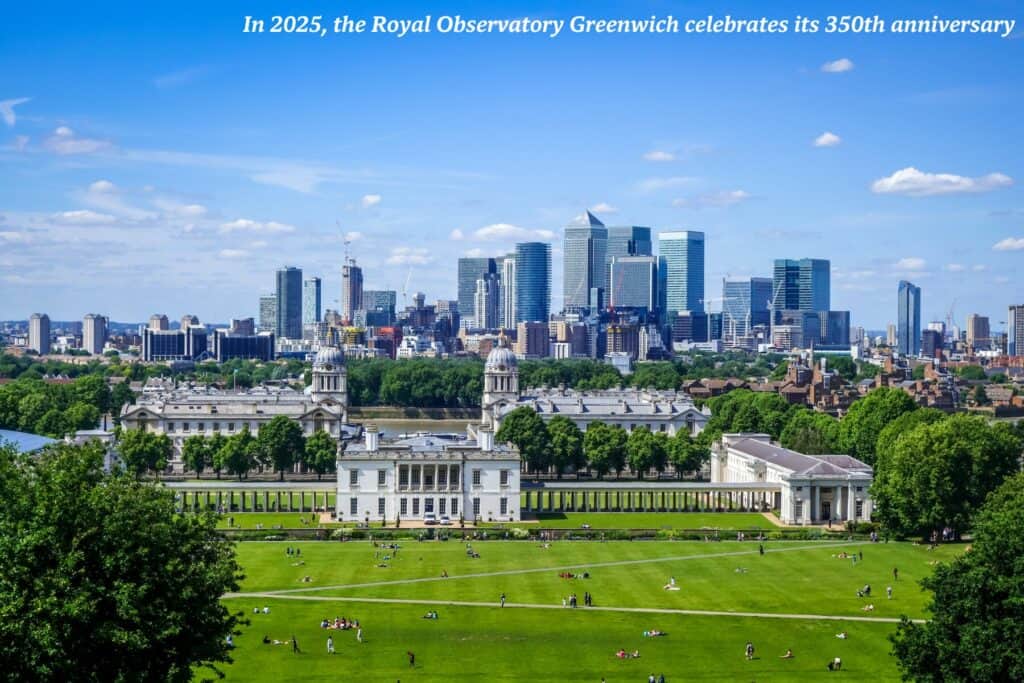
East London
Three hundred and fifty years may not be a long time when it comes to the stars but it is when it comes to human exploration. In 2025, we take you to Greenwich where the Royal Observatory plans to celebrate this impressive milestone.
In one way, Greenwich is a place where time quite literally begins. Stand astride the Prime Meridian Line, the point from which the world measures its time zones. Explore the Royal Observatory’s exhibits, where the story of the stars and the quest to chart the seas come vividly to life. The iconic Flamsteed House, designed by Sir Christopher Wren, invites you to step back into the 17th century and imagine the early days of astronomical discovery.
From the heights of Greenwich Park, gaze out over the River Thames and the gleaming towers of Canary Wharf – London’s past and present in one Instagram snap.
After soaking in the celestial history, venture into the lively neighbourhoods of East London. Wander the street art-covered lanes of Shoreditch, browse the eclectic stalls of Spitalfields Market, or hunt for treasures at the vintage shops of Brick Lane. The creative spirit thrives in galleries, pop-up restaurants, and converted warehouses where you can feel the future taking shape.
Don’t miss a walk through Victoria Park’s leafy paths or a visit to Columbia Road Flower Market on a Sunday morning, where the air is filled with the scent of fresh blooms. Head to the Museum of London Docklands to uncover the city’s maritime past or enjoy a riverside walk along the Limehouse Cut.
For more ideas for exploring London, check out our Freedom Pass London guide. For although you’ve already heard it, it’s worth saying again: when man is tired of London, he is tired of life.
How to explore East London
Reaching Greenwich from central London is easy: take the Docklands Light Railway (DLR), hop on a Thames riverboat from Westminster Pier, or use the Jubilee line to North Greenwich station.
The best time to visit is year-round, but sunny days in spring and summer are particularly pleasant for strolling through the greenery and admiring the river views. If you’re interested in astronomy and maritime history, consider planning your visit during off-peak seasons for fewer crowds at popular attractions.
Pack comfortable walking shoes for the park’s hills and the area’s cobbled streets. Bring a light jacket or umbrella in case of rain, and don’t forget a camera to capture panoramic city views, especially from the Observatory’s vantage point.
For more about the English capital, see Freedom Pass London.
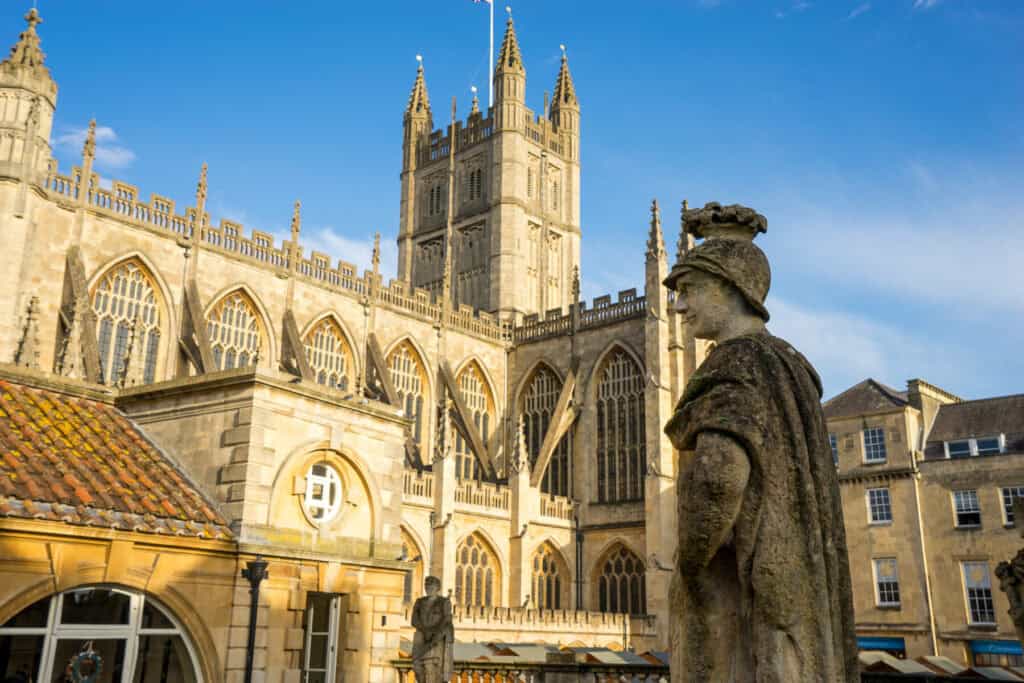
The Cotswolds
The Cotswolds, where rolling hills cradle honey-hued villages and history whispers from every stone. You might think you already know this region well, but in 2025, there’s a compelling reason to turn your focus to Bath – that world famous city of elegance, healing waters, and literary legends.
This year marks 250 years since the birth of Jane Austen, and Bath’s graceful Georgian architecture sets the perfect stage for a celebration. Stroll along the sweeping curve of the Royal Crescent and imagine the characters of Pride and Prejudice promenading by. Visit the Jane Austen Centre to immerse yourself in her world, complete with costumed guides and afternoon tea.
Bath’s Roman roots still bubble up at the famous thermal spas, where steaming waters offer a modern-day retreat. The ancient Roman Baths invite you to trace the footsteps of toga-clad visitors from two millennia ago.
Beyond Bath, the Cotswolds’ landscape unfolds in a patchwork of meadows, stone walls, and thatched cottages. Villages like Castle Combe, Bibury, and Stow-on-the-Wold exude old-world charm, with cosy pubs, antique shops, and gardens that bloom with quintessential English grace. For more ideas, see our list of the best little-known towns in the Cotswolds.
In 2025, the Bradt guide to the Cotswolds will be your companion for this journey through literary heritage, pastoral beauty, and warm-hearted hospitality.
How to explore the Cotswolds
Travelling to Bath is easy enough by train from London Paddington. However, for the rest of the Cotswolds, you’re better off with a car or guided tour to reach the area’s picturesque villages. Driving from London takes around two hours, offering flexibility and scenic routes through rolling hills.
The best time to visit is from late spring to early autumn (May to September), when the weather is mild and ideal for countryside walks, cycling between villages, and exploring historic market towns. The region’s honey-coloured stone buildings, flower-filled gardens, and gentle landscapes are at their most captivating during these months.
Pack comfortable walking shoes, layered clothing for changeable English weather, and a reusable water bottle for long rambles. Don’t forget a camera to capture the quaint thatched-roof cottages, winding lanes, and lavender fields. A light rain jacket and umbrella can be handy, just in case of the occasional shower.
You can find out more about Bath and the surrounding areas in our guide to the Cotswolds. Plus, stay tuned for our brand new guide to Dog-Friendly Cotswolds – coming March 2026!
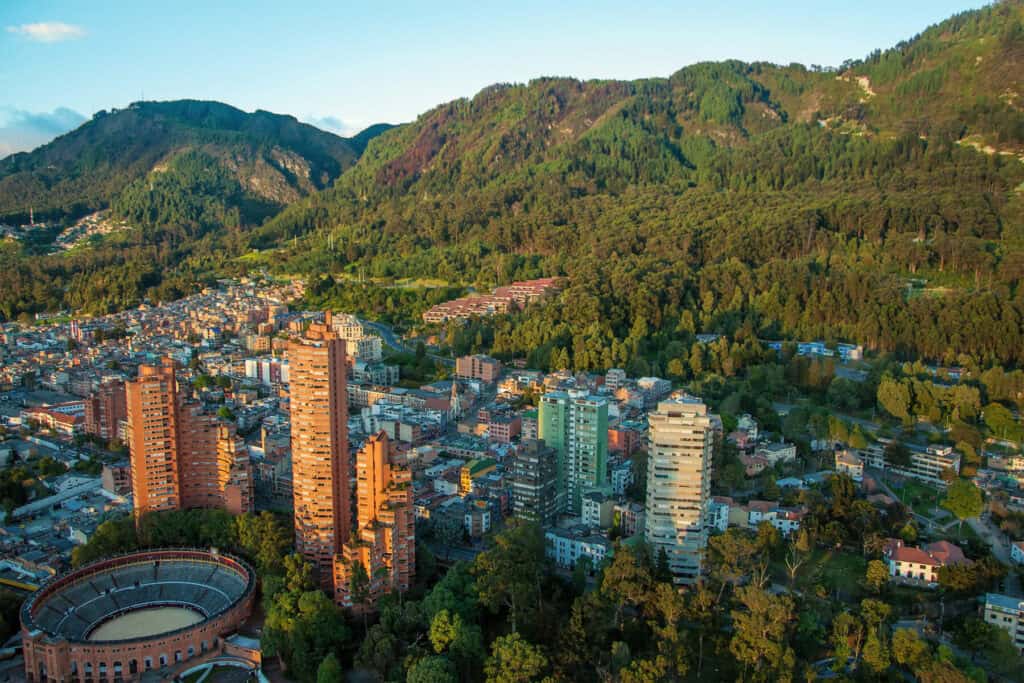
Colombia
Once overshadowed by turbulent headlines, Colombia now celebrates a glorious comeback, making it an easy country to include in our collection of the best places to visit in 2025.
Begin in Bogotá, the capital perched high in the Andes, where colonial architecture meets street art and the Gold Museum dazzles with treasures from ancient civilisations. Wander the cobbled streets of La Candelaria or take a cable car up to Monserrate for sweeping views of the city below.
From there, head to Cartagena, a walled city that hums with romance and history. Stroll beneath bougainvillaea-draped balconies and lose yourself in the rhythm of salsa spilling from vibrant plazas. Off the coast, the Rosario Islands offer turquoise waters, coral reefs, and an invitation to snorkel or simply bask in the sun.
But Colombia’s magic lies in its diversity. The coffee region’s lush hills roll out like a green carpet, dotted with haciendas where the scent of freshly roasted beans fills the air. In Medellín, innovation and resilience bloom amid a backdrop of striking mountain views and cable cars gliding above the bustling streets.
For nature lovers, Tayrona National Park is a dream of golden beaches framed by jungle-clad mountains. Deeper still, the Lost City (Ciudad Perdida) awaits, an ancient wonder reached by a challenging trek through dense rainforest.
With the Bradt guide to Colombia in hand, prepare to travel from jungle-shrouded ruins to remote Caribbean coves.
How to explore Colombia
Travelling to Colombia typically involves flying into Bogotá’s El Dorado International Airport, which offers direct connections from Europe and North America. From there, domestic flights, buses, and private transfers will get you to popular destinations like Medellín, Cartagena, and the Coffee Region.
The best time to visit depends on what you want to do. Generally, December to March is a great period for dry weather, making it easier to explore cities, beaches, and national parks. However, Colombia’s varied climates mean that any time of year can be rewarding, especially if you’re seeking lush landscapes and fewer crowds.
Pack lightweight, breathable clothing for Colombia’s tropical areas, along with a light jacket for cooler regions like Bogotá. Comfortable walking shoes, sunscreen, insect repellent, and a hat will ensure you’re prepared for the country’s diverse landscapes and climates.
To find out more, see our guide to Colombia – new edition coming December 2025. Plus, stay tuned for our brand new South American Handbook, publishing June 2025!
More information
For more on where to travel in 2025, see our selection of great value, in-depth guides:






